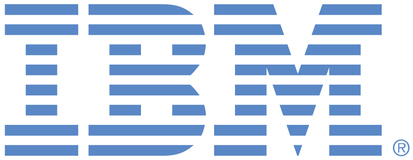
This portal is to open public enhancement requests against IBM Power Systems products, including IBM i. To view all of your ideas submitted to IBM, create and manage groups of Ideas, or create an idea explicitly set to be either visible by all (public) or visible only to you and IBM (private), use the IBM Unified Ideas Portal (https://ideas.ibm.com).
Shape the future of IBM!
We invite you to shape the future of IBM, including product roadmaps, by submitting ideas that matter to you the most. Here's how it works:
Search existing ideas
Start by searching and reviewing ideas and requests to enhance a product or service. Take a look at ideas others have posted, and add a comment, vote, or subscribe to updates on them if they matter to you. If you can't find what you are looking for,
Post your ideas
Post an idea.
Get feedback from the IBM team and other customers to refine your idea.
Follow the idea through the IBM Ideas process.
Specific links you will want to bookmark for future use
Welcome to the IBM Ideas Portal (https://www.ibm.com/ideas) - Use this site to find out additional information and details about the IBM Ideas process and statuses.
IBM Unified Ideas Portal (https://ideas.ibm.com) - Use this site to view all of your ideas, create new ideas for any IBM product, or search for ideas across all of IBM.
ideasibm@us.ibm.com - Use this email to suggest enhancements to the Ideas process or request help from IBM for submitting your Ideas.

Thank you for submitting this request.
After some consideration, we need some additional information.
While the base request seems clear, some of the examples make it less clear for us.
To start with, EDTF is more of an application. When EDTF is used to create a file, the EDTF code specifically sets the permissions on the owner and public to *RW. This is outside of what might be considered the 'default' of how permissions are set on new files.
The use case statement is: I have directories now in which even the user who creates file (when using a Client/Server tool instead of EDTF) cannot delete the file.
Please explain what " Client/Server tool" was used. A mapped drive? Navigator? Java Toolbox for IBM i? They may behave differently. Generally we try to have the owner get all permissions when a server creates the file because of how many of the pc applications work.
The permissions of new file system objects is very dependent on the method in which the object is created. The Unix type APIs specifically allow you to specify the owner, group and other (public) permissions. We have an o-flag (O_INHERIT) which will tell us to set permissions based on the parent directory, including the authorization list. Other methods such as CPY, CPYTOSTMF, etc have other ways to indicate the permissions.
It will take some thought to determine if/how we can do this request, but knowing the exact ways the file is created (other than EDTF which I've explained above), will help us to understand.
Thank you.
The CAAC has reviewed this requirement and recommends that IBM view this as a medium priority requirement that should be addressed. We understand that the current functionality probably matches a UNIX mindset, but users of IBM i are challenged with permissions and authorities.
Background: The COMMON Americas Advisory Council (CAAC) members have a broad range of experience in working with small and medium-sized IBM i customers. CAAC has a key role in working with IBM i development to help assess the value and impact of individual RFEs on the broader IBM i community, and has therefore reviewed your RFE.
For more information about CAAC, see www.common.org/caac
For more details about CAAC's role with RFEs, see http://www.ibmsystemsmag.com/Blogs/i-Can/May-2017/COMMON-Americas-Advisory-Council-%28CAAC%29-and-RFEs/
Nancy Uthke-Schmucki - CAAC Program Manager